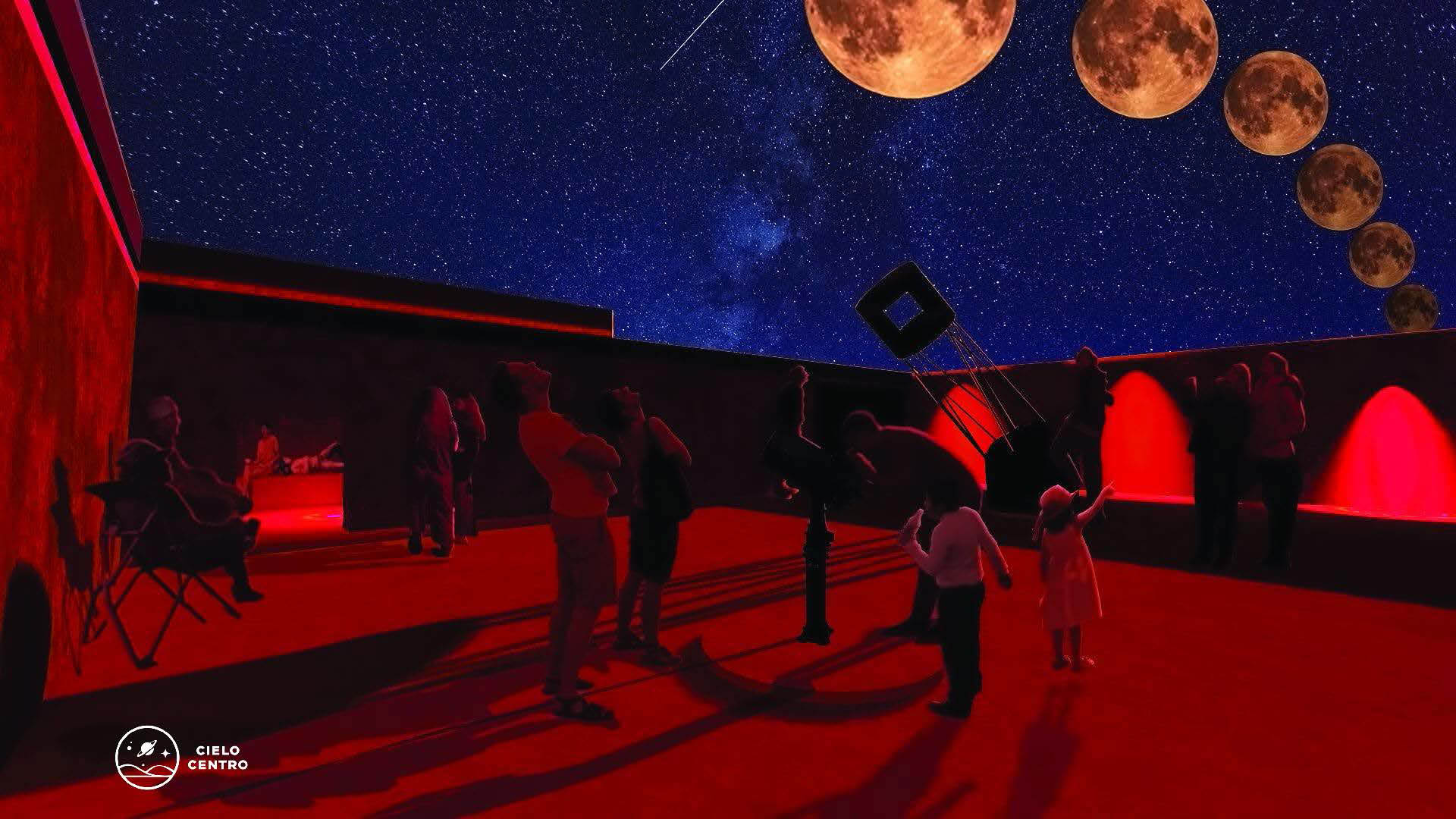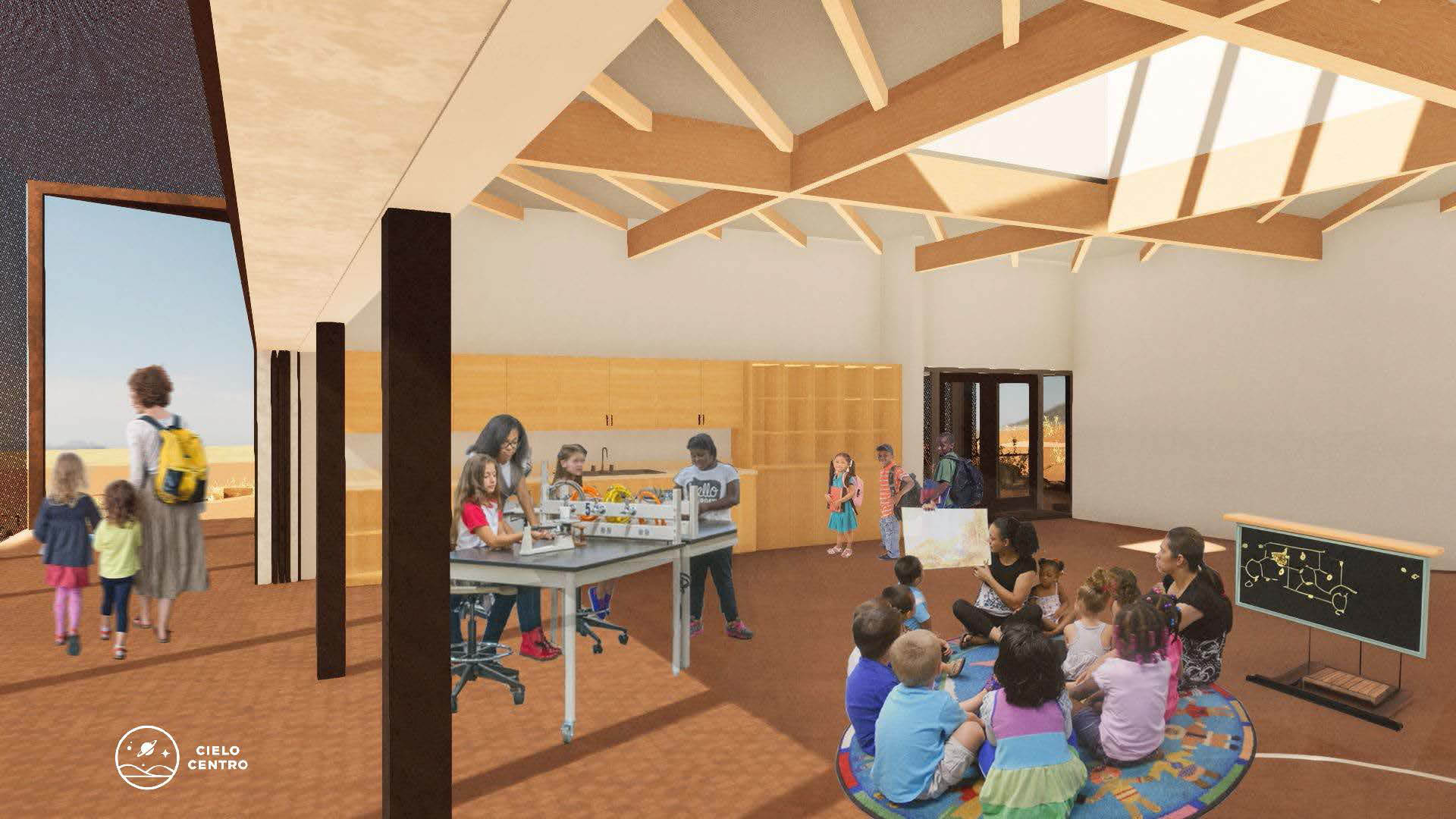Taos Science & Space Education

PROJECT DESCRIPTION
UNM-Taos proposes to build a Space STEM Center (S-STEM Center) on its campus. The center will house the college's astronomy classes in addition to other STEM classes related to space sciences. The instructional areas will be adjacent to the UNM-Taos observatory and will serve as a site for K-12 outreach and community learning. The center will be unique in New Mexico because it is in a dark sky location, has the largest public telescope in the state, and offers an observatory and a planetarium, allowing students and visitors to benefit from hands-on learning experiences and operate some of the college's telescopes. The closest comparable facility is in Flagstaff Ariz., a 7-hour drive from Taos.
The heart of the center will be the astronomical observatory, which will house a large telescope (36-inch diameter mirror, 12-foot tall). This telescope will be the largest in New Mexico accessible to the public. It will be used to take advantage of the area’s dark skies to show planets, nebulae, star clusters, and distant galaxies to students in STEM classes as well as to local students and visitors in regularly scheduled public viewing events. The college’s smaller telescopes and binoculars will be stored at the center and will be made available for use by visitors on open nights. Local astronomy clubs will also have access to the facilities. Also included will be an outdoor planetarium where visitors will be shown images and details of celestial objects, which will then be pointed out to them in the night sky.
The addition of the Southwest’s largest public telescope to the UNM-Taos campus will promote enrollment growth, retention, and degree production in both the short term and the long term. Together the 36" telescope, future observatory, and S-STEM Center produce a learning environment that has the potential to train strong STEM graduates from UNM-Taos. NASA has approached UNM-Taos to explore a future Physical Science Conservation Corps modeled after UNM-Taos's successful Climate Change Corps. The model pulls together hands-on learning (made possible by the telescopes, observatory, and instructional space) with technical education to prepare for a high-demand skilled workforce. The proposal will increase the astronomy and physical science classes taught at UNM-Taos, provide work-study opportunities for students who will be trained to assist with telescopes and the observatory, and set up UNM-Taos to expand learning opportunities to other educational partners in New Mexico.
Additional Background
UNM-Taos’ Science department conducts its astronomical observations out of a temporary prefabricated metal storage shed with a small area of concrete pavers. Makeshift light shielding is ineffective at blocking transient light sources from campus and nearby roads from reaching telescope lenses. The site is neither secure nor ADA accessible. The shed is routinely accessed at night during dark sky conditions. Under these conditions, the site presents safety concerns as students and visitors park nearby the shed but have no pathway to the shed or pad. Students use flashlights or cell phones to access the shed. The lack of lighting and poor access has created security issues as well. The storage shed poses a security risk. The shed was broken into and valuable instructional equipment was stolen; neither can the site be monitored or patrolled in the same manner as the rest of the campus. Finally, there are no water or restroom facilities near the shed.

NASA's Equity Action Plan is working to recognize and overcome barriers that hinder equitable, inclusive access to the programs, resources, and opportunities that make NASA's work possible. NASA has launched the Science Mission Directorate (SMD) Bridge Program to develop sustainable partnerships between NASA Centers and Minority-serving Institutions such as UNM-Taos. In May 2023 UNM-Taos was contacted by Mike Garcia of NASA and asked to meet to begin to plan to implement the NASA SMD Bridge Program at UNM-Taos.
UNM-Taos has already developed a pre-K-12 STEM curriculum on the campus to partner with local schools to enhance the introduction of area students to STEM concepts, career options, and college certificates and degrees. These efforts exist to increase the percentage of local students who enter college and pursue STEM-related degrees and careers. Again, NASA supports these efforts by developing a curriculum and programming for a pre-K-12 audience. UNM-Taos will adopt the Challenger curriculum for preK-12 students. Challenger curriculum inspires, engages, and prepares today's students for the future through innovative, K-12 science, technology, engineering, and math (STEM) education programs. As a result of employing this curriculum, UNM-Taos anticipates an overall increase in local enrollment and an increase in STEM majors for years to come.
Total GO Bond Request: $1.5 million
